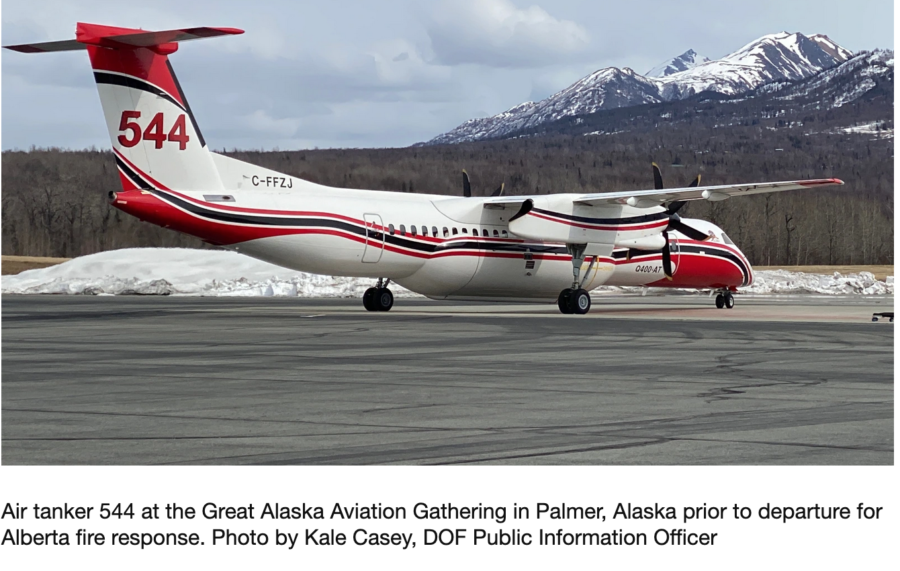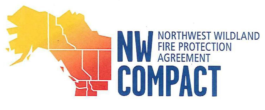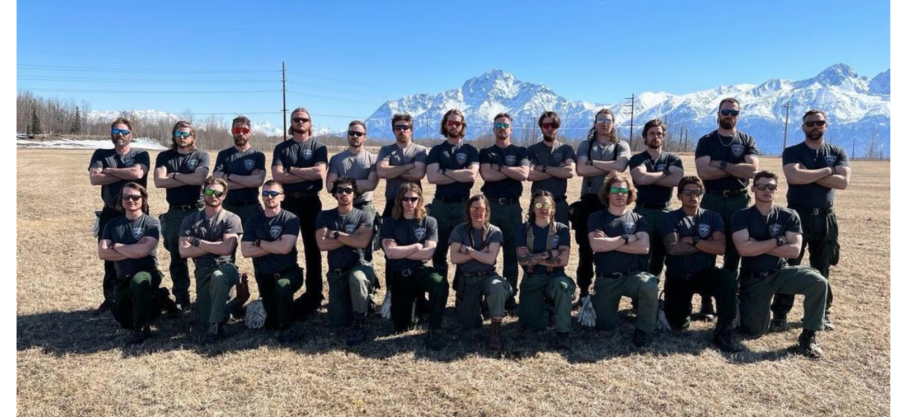The Alaska Division of Forestry and Fire Protection (DOF) has sent resources to the Canadian province of Alberta, where agency information officer Lily Coyle says they’re dealing with an unusually intense early wildfire season.

“They declared a state of emergency over this past weekend,” Coyle told Alaska Public Media (PBS). “On Saturday they had over 100 wildfires spreading out of control. Their Premier Danielle Smith deemed it an unprecedented crisis.”
Aerial Fire Magazine reported that at least 29,000 Albertans have been forced from their homes in the north and central regions of the province. Fire managers in Alberta have made large resource requests for outside assistance, including the airtanker and hotshot crew from Alaska. The  strong intergovernmental agreement known as the Northwest Compact allows Alaska and other states and provinces to request or share resurces internationally.
strong intergovernmental agreement known as the Northwest Compact allows Alaska and other states and provinces to request or share resurces internationally.
Considering Alaska’s delayed snowmelt, late spring, and recent widespread moisture, the DOF made available Airtanker 544 — a Conair Dash 8 – 400
AT Airtanker — and the Pioneer Peak Hotshots, both based in Palmer. Tanker 544 departed for Alberta on May 9. Pioneer Peak IHC has extensive experience in managing fires, and the crew has completed their required 80 hours of pre-season training. The 23-person crew left Tuesday, May 9 in a smokejumper aircraft.
“Alberta was a significant contributor to the Alaska response effort last season,” said DOF Chief of Fire and Aviation Norm McDonald. “Supporting their efforts this spring is an excellent example of not only national but the international cooperation it takes to manage fires during extreme conditions. As we are just beginning the Alaska fire season with our late breakup, we will continue to monitor fire behavior and our own fire protection needs.”

Coyle said Alaska fire agencies often send resources outside the state in the fall, but she said the spring deployment is very unusual. “This is the first time we’ve sent a crew to Canada in May,” she said. “Our late fire season, coupled with the early drought conditions that Alberta is facing — that just set us up for this pretty unprecedented situation.”
On the federal side, Alaska Fire Service public affairs specialist Beth Ipsen said no resources have yet been sent to Alberta, but the agency has two hotshot crews that will be finishing training this week and may be available for deployment.
